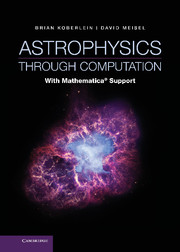9 - Cosmic structures
Published online by Cambridge University Press: 05 June 2014
Summary
In the first part of the twentieth century, the study of the cosmos (hence cosmology), meaning the study of the universe, was mainly theory. Much of the observational material was beyond the grasp of the telescopes of the time, photography was the only detection medium, and spectroscopy was very primitive. Astrophysics had to thrive by observational studies of the sun, the major planets, and bright stars. Nebulae and clusters had been cataloged by Messier, William Herschel, Caroline Herschel, and John Herschel by the thousands, but few astronomers of the time ever thought they would have the technology to truly study such things in detail.
Lack of observational data has historically been the achilles heel of cosmology. As recently as 1990 Kolb and Turner complained that astrophysics in general and cosmology in particular needed more observations. The present situation is in marked contrast to this view, such that there are now so much data publicly available that it strains our computational ability to analyze it. So many people are currently involved with data reduction and analysis that in the last decadal survey there was a call for the formation of a new area of astronomy and astrophysics called astroinformatics (Borne, 2009).
We start this chapter with several topics that are active parts of this frontier subfield of astronomy and astrophysics, as much of the data in the large databases are galactic and extragalactic. As we shall see, our examination will be limited not by the available data, but by our ability to analyze these data on a personal computer. We begin with an examination of the Hubble law, including evidence of universal acceleration. We then examine galaxies, including radio galaxies and quasars. Finally we look at cosmic structure and evolution.
- Type
- Chapter
- Information
- Astrophysics through ComputationWith Mathematica® Support, pp. 309 - 356Publisher: Cambridge University PressPrint publication year: 2013

